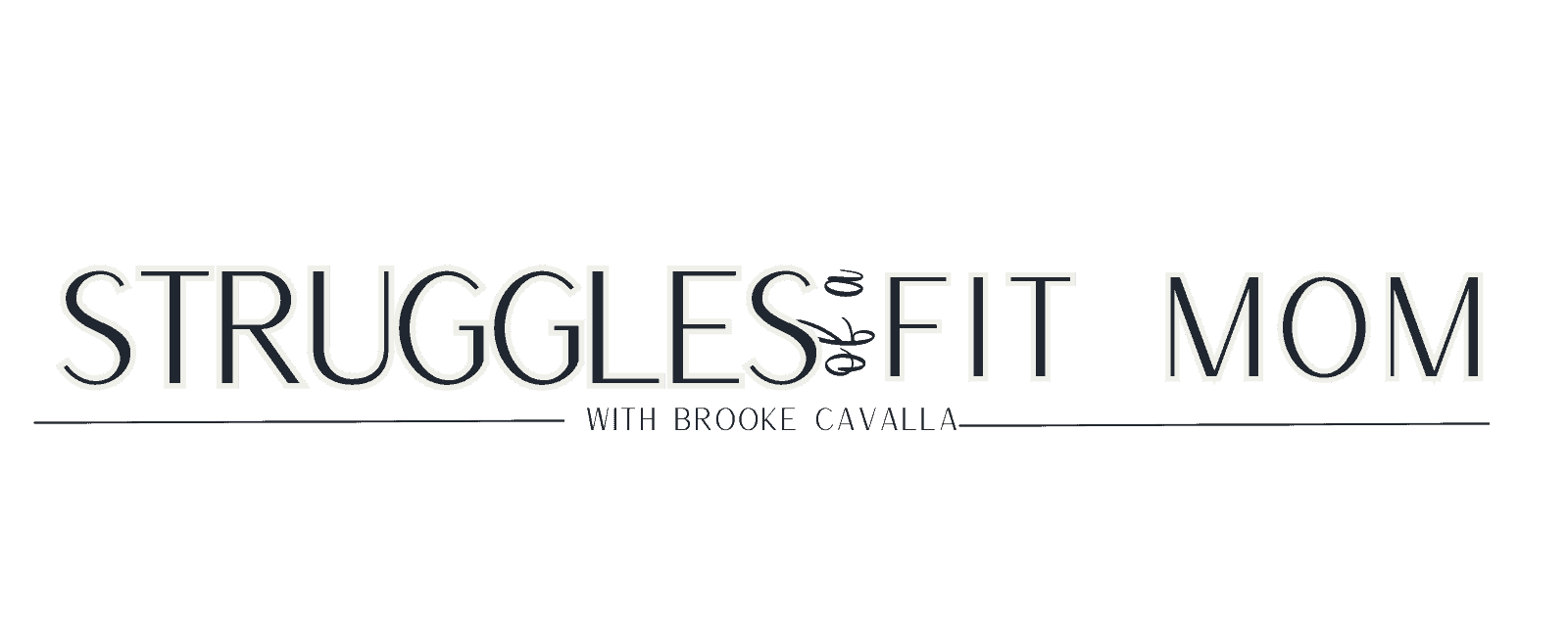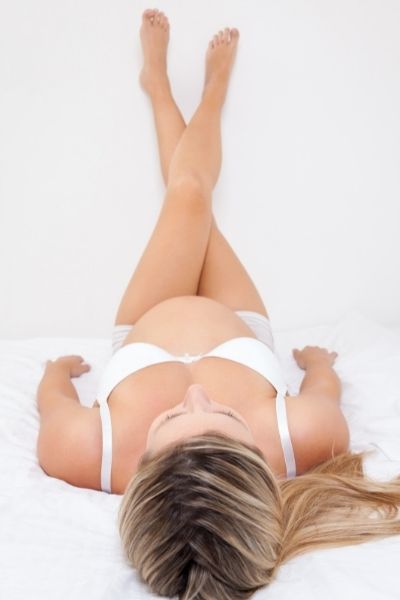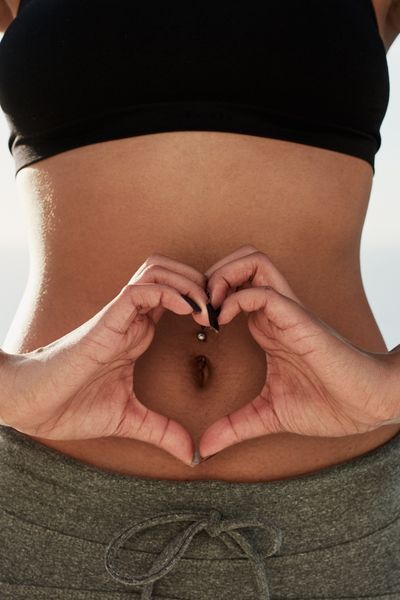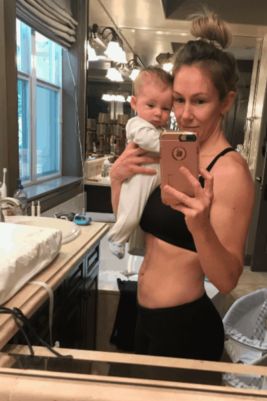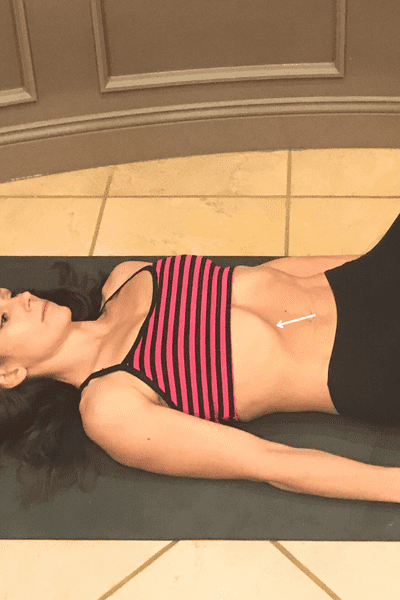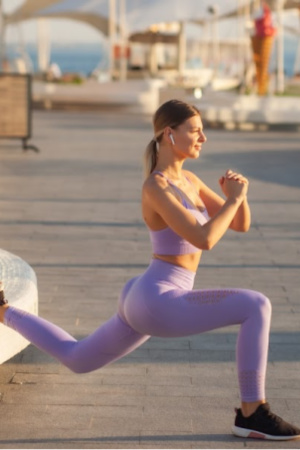These Are The 15 Best Exercises To Target Your Underbutt
(This post probably contains affiliate links. I receive a small commission at no cost to you through links shared on this website to help keep the information I provide free to you)
If you are looking for the best under butt exercises, you have come to the right spot.
These 15 exercises and three workouts will get you moving in the right direction to get those perky glutes you’ve been after.
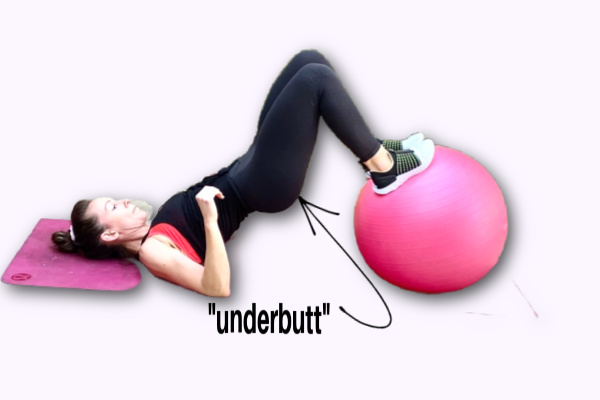
But make sure you read through the nitty-gritty because glute training isn’t quite as simple as it seems.
Too many booty workouts just simply say, “do these exercises for a firm booty” or “do this squat challenge to transform your glutes”. For most people, glute training requires more than just a few exercises. It requires strength training with proper mind-muscle connection to really maximize your efforts.
The combination of strength training and fat-burning exercises can help you reach your goals much faster than just doing a few booty band exercises.
In order to really learn how to target your underbutt (or any body part), you will need to have a little understanding of how “toning” and fat loss work.
Otherwise, you may not achieve the results you are looking for.
So let’s dive right in and talk about the best exercises to target the underbutt area and get that nice, perky booty you are wanting!
What is the Underbutt?
First, let’s define the underbutt area to help improve mind-muscle connection.
Visualizing the muscles you are working can dramatically improve your results.
The underbutt is considered the area under your glutes where your hamstrings meet the glutes.
This area can be especially tricky to strengthen and tone because genetically, most women store fat in their hips and buttocks.
This is great for child bearing (aka, childbearing hips!) but many women want a more lifted and perky hiney, right?
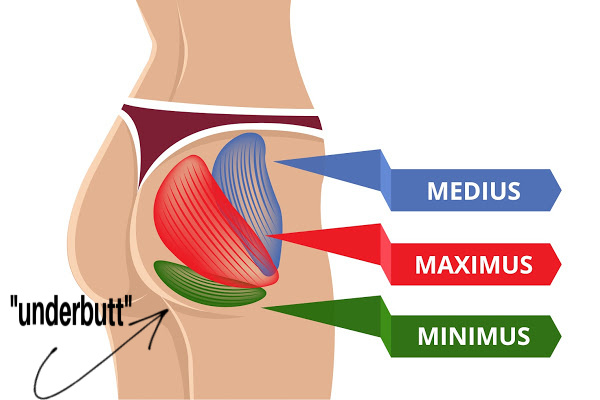
The Benefits Of Glute Training
A nice back-side is a great goal for confidence but working your glutes is not just for aesthetics.
The glutes are the largest, yet often most underutilized muscle group in your body.
And they are actually composed of three smaller muscles:
The gluteus maximus-
This muscle is located at the back of the hips and is the largest muscle in your body.
It has the important job of maintaining body posture, holding yourself in a standing position, and climbing stairs.
The gluteus medius-
This muscle is responsible for hip rotation.
A tell-tale sign of a weak gluteus medius muscle is caving of the knees when you squat.
When this muscle is weak, it cannot externally rotate your hip like it is supposed and can cause knee and hip pain.
The gluteus minimus–
The gluteus minimus is the smallest of the glute muscles and it’s responsible for pelvic stability and keeping the pelvis stable when walking or running. It is also responsible for moving the thigh away from the body, known as “thigh abduction”.
Strong glutes, especially during pregnancy and postpartum, is very important for pelvic stability, improving posture and reducing hip and knee pain.
And studies show that those with weak glutes, have more chronic back pain.
I would argue that strong glutes are one of the most important muscles for optimal function of the entire body.
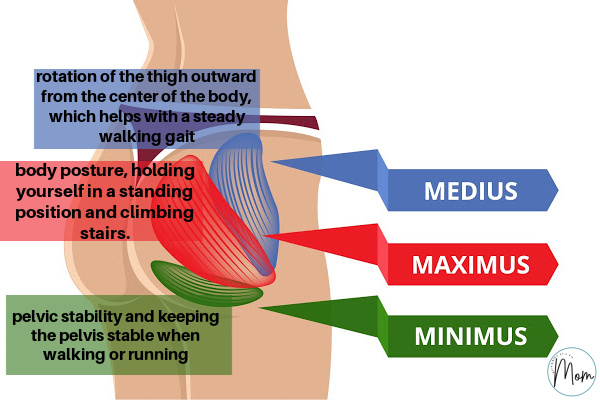
Let’s Talk About Glute Amnesia
One of the biggest challenges with training the glutes is that they are often “asleep”.
We refer to this as something called “dead butt syndrome” or “gluteal amnesia”.
This basically means that the glute muscles are not firing properly even when performing exercises that you THINK are working your glutes.
Not all weak glutes are asleep, but it is very common.
Does this help explain why all those squat challenges don’t work?
The most common cause of sleepy glute muscles is tight hip flexors from sitting all day.
When the hip flexors get tight, the glute muscles cannot fire as effectively and they become “lazy”.
This means that when you attempt to do glute exercises, other muscles like your quads and hamstrings begin to take over and you may not even feel your booty working at all.
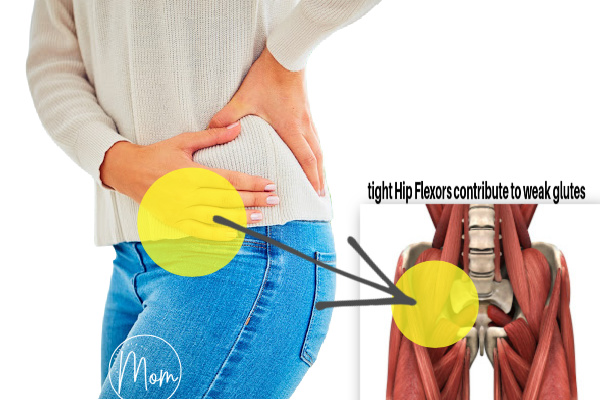
Can Your Spot Train the Underbutt?
Is it really possible to specifically target this underbutt area?
Yes and no.
One of the biggest myths in the fitness world is that you can simply “spot reduce” or “tone” certain body parts.
You may have even found this post because you searched something like, “Best exercises to tone my underbutt.”
While I am glad this search brought you to me, I want you to understand that in order to target, tone or “spot reduce” a specific area on your body, you need to do two things.
- Reduce overall body fat
- Strength train to build lean muscle
While we CAN control overall fat loss, we cannot exactly control where the fat loss comes from.
I have found the best way to reduce overall body fat AND build lean muscle is through a combination of High Intensity Interval Training and strength training.
As a busy mom, this method of training allows me to knock out two things at once, build muscle and burn fat.
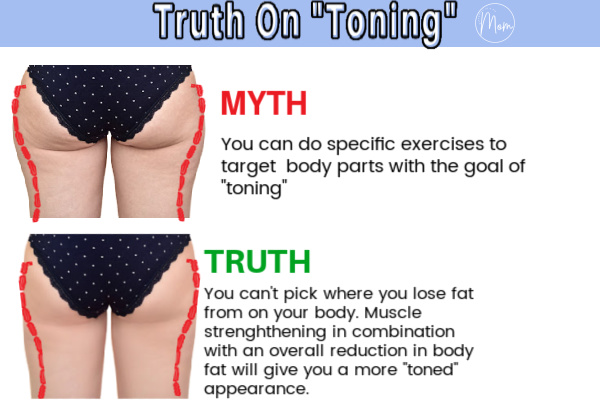
The Best Exercises To Target The Underbutt
Let’s summarize where we are so far.
In order to reshape your glute, you need to do three things:
- Wake up your glute muscles to improve mind-muscle connection
- Strength train to add more muscle definition
- Burn overall body fat
Don’t worry, this is not as complicated or time consuming as it sounds.
One key point to remember is that when time is your limiting factor to exercise, HOW you exercise makes the biggest difference.
I have found the best method for really targeting my glutes and the underbutt area is to combine strength training with High Intensity Interval Training.
This is because they both help to increase metabolism and burn MORE calories throughout the day which is great for overall weight loss.
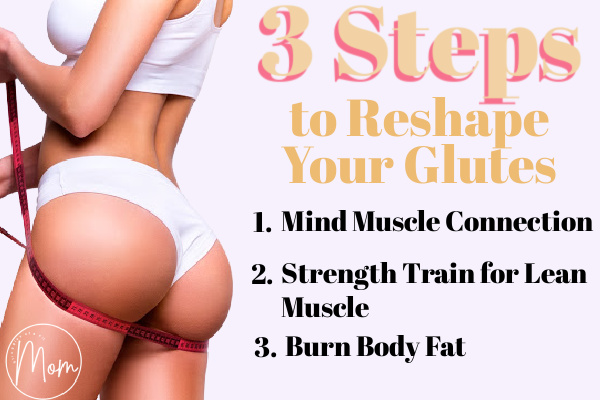
1. Start With a Little Glute Activation
These are low intensity exercises to help tell your glutes it’s time to wake up and do some work.
These exercises are meant to increase blood flow to the muscle and help with mind muscle connection.
Single Leg Banded “Cha-Cha”
- Begin by placing a loop band around your knees
- Engage your core and lower into a narrow half squat position.
- Keep both glutes engaged. Squeeze (activate) your left glute for support and step your right foot to the side just tapping your toes on the ground.
- Bring your foot back to center then squeeze your glute and tap your foot behind you.
- Continue alternating tapping your foot to the side and behind your for seconds each leg.

Glute Bridge with Loop Band
- Start on your back with your feet flat on the ground, knees shoulder width apart and place a loop band around your knees.
- Engage your core (think pelvic tilt), press your heels through the floor while squeezing your glutes to lift your hips toward the ceiling. Your knees should be slightly pressing out against the loop band.
- Hold at the top for 5 seconds, then slowly lower.
- Make sure to keep your core engaged through the entire movement to prevent hyperextending your hips or low back pain.
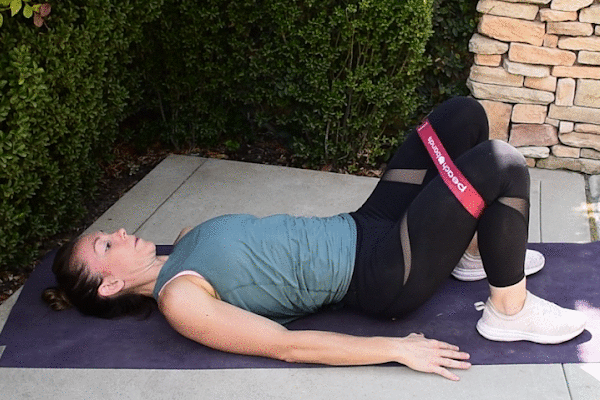
Glute Bridge March
- Start on your back with your feet flat on the ground, knees shoulder width apart.
- Engage your core (think pelvic tilt), press your heels through the floor while squeezing your glutes to lift your hips toward the ceiling.
- Now engage your right glute to keep your pelvis straight and lift your left foot off the ground and bring your knee toward your chest.
- If you can’t keep your pelvis straight, only lift your foot as high as you can without movement.
- Lower your leg and repeat on the opposite side.
- Continue marching back and forth for 30-45 seconds.
- Focus on keeping your core tight and opposite glute engaged as you bring your knee up.
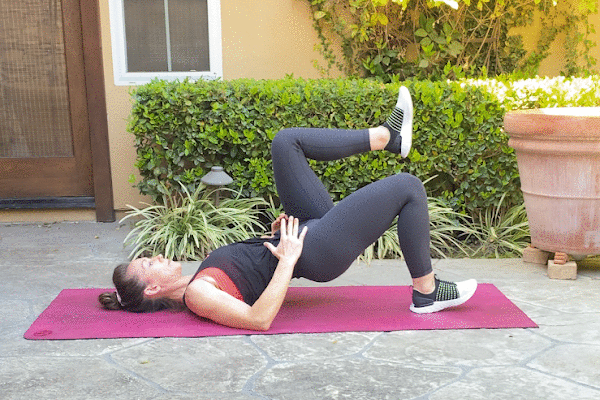
Clams
- Begin on your side with your knees bent and head resting on your bottom arm. Your hips should be stacked to prevent them from sinking forward or falling back.
- Engage your glute (where my finger is pointing) to lift your top leg. Avoid any movement in your pelvis as the leg lifts by firmly engaging your core and glutes.
- Lower and repeat for 10-12 reps before switching sides. Do 1-3 sets on each leg.
- There should be little to no movement in your pelvis.
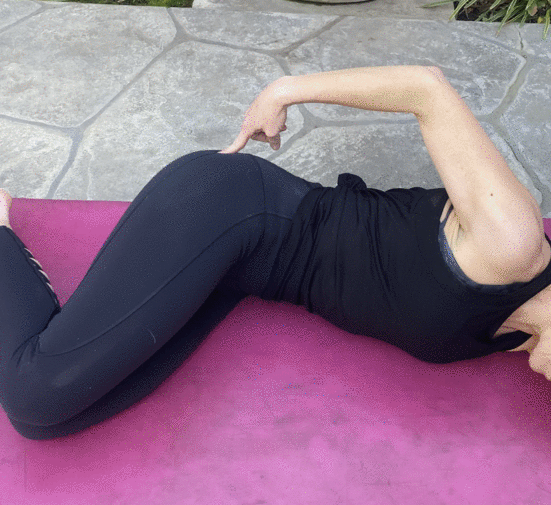
2. Strengthen
Now your mind and glutes are awake, complete each group of exercises in a circuit before moving to the next circuit.
Single Leg Hip Thrusts
If this is too challenging, start with your back on the floor and work your way up to a hip thrust.
- Using a sturdy chair or bench, carefully slide yourself down until the edge of the bench is just below your shoulder blades.
- Place the backs of your arms against the edge for support but DO NOT use them to help in the movement.
- Place your feet in front of you so that your knees are at a 90 degree angle.
- Engage your core to keep your ribs down and contract (squeeze) your left glute muscle.
- Pressing through the heel, drive your hips up as far as you can without arching your back.
- Keep your gaze forward and not up or behind your. The movement comes from the lower body and there so be no rocking of the upper body.
- Continue squeezing your glute at the top for a count of 3, then slowly lower to the starting position.
- Repeat on the same leg for the duration of the interval, then switch legs.
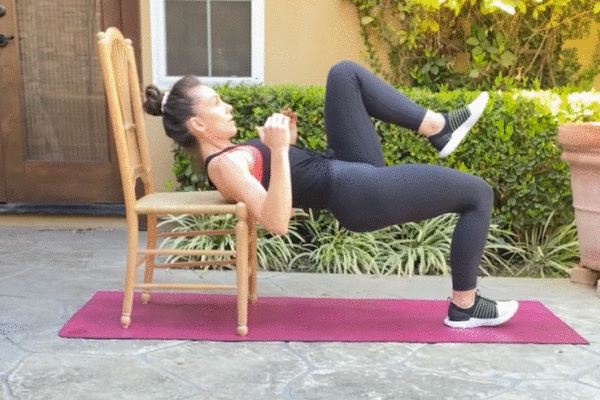
Bulgarian Split Squat
- Start by standing about 2 feet in front of a bench or sturdy chair.
- Grab a pair of dumbbells and lift your right leg and place it on the surface behind you. (you can also do this without weights).
- Your front foot should be far enough in front of you to be able to comfortably squat down. You can hop your foot around a little until you find the right spot.
- Engage your core, squeeze your glute, and slightly lean forward at the waist.
- Descend down into a single leg squat. The weight of your body should be in the heel.
- Stop when your thigh is a little lower than parallel to the ground or as far as your flexibility allows.
- Push through your left heel to engage the glute and return to standing.
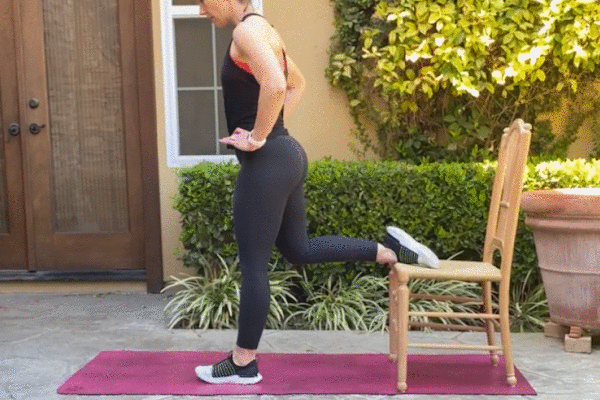
Single Leg Deadlift to Reverse Lunge
- Start with your feet about shoulder-width apart and your knees slightly bent. You will maintain this bend for the duration of the exercise. You can lightly rest your hand on a chair for support if needed and work your way up to doing the movement unsupported.
- Engage your left glute (think squeeze), and slowly begin to hinge forward at your hips, keeping your back straight, not hunched. Sometimes putting something in front of you can help you focus.
- Continue lowering until your torso is parallel to the floor.
- Focus on keeping your pelvis straight and prevent one side or the other dipping down or reaching up.
- Pause at the bottom for a brief hold, then squeeze your left glute hard to bring your body back up.
- Once you have reached the top, step your right leg back to do a reverse lunge.
- At the bottom of the lunge, press through the heal to bring yourself back to the starting position.
- You will do all reps on the left side then switch to the right side.
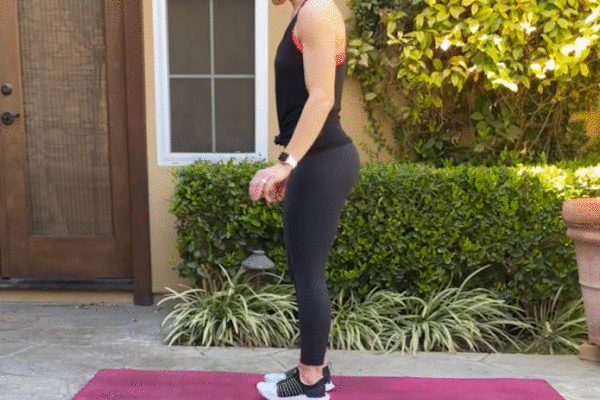
Yoga Ball Donkey Kicks
- Begin by placing a loop band around your knees and position yourself on your hands and knees with your wrists directly under your shoulders and knees under your hips.
- Engage your core and squeeze your left glute. Keep your core firmly engaged to prevent any movement in your pelvis as you lift your leg.
- Keeping your foot flexed, press your foot up toward the ceiling. Keep squeezing your glute at the top of the exercise. Make sure your back isn’t arching and core is engaged to keep it flat.
- Slowly lower back down and repeat for repeat all reps on each side before switching legs.
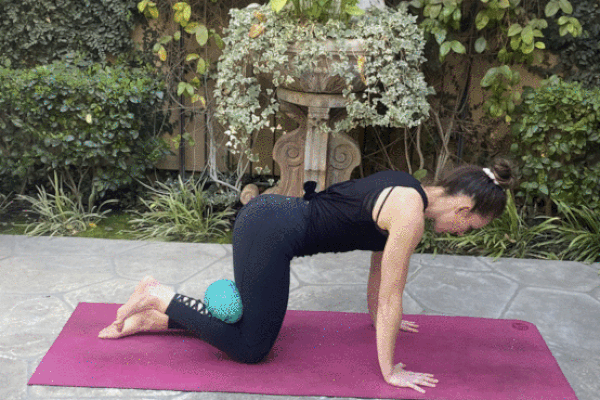
Stability Ball Glute Bridge
- Start on your back with your knees bent and feet flat on top of a stability ball.
- Lift your hips toward the ceiling by engaging your core, squeezing your glutes, and pressing through your heels to lift your bottom off the ground.
- Hold this position at the top for 3 seconds while squeeze your glutes, then slowly lower.
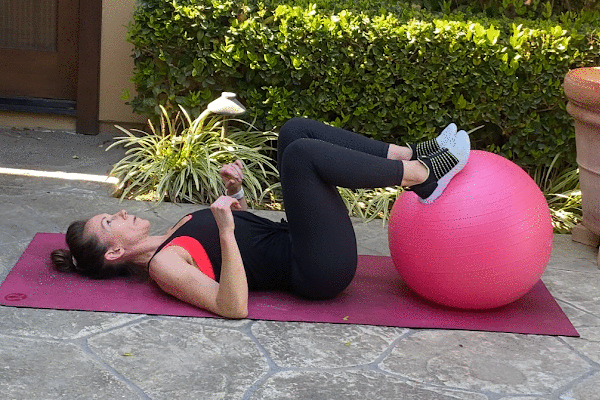
Add a hamstring curl for an extra challenge!
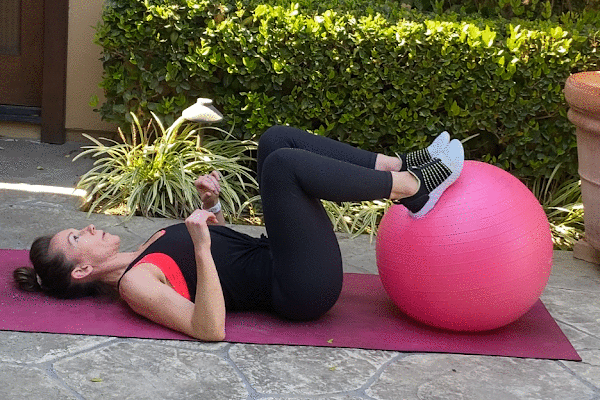
Deficit Reverse Lunges
- Holding a pair of dumbbells, stand on a sturdy bench, chair or step stool with your feet about shoulder-width apart.
- Engage your core and carefully step your right foot back landing on the ball of your foot.
- Continue bending your front knee as you sink into a deep lunge.
- Focus on keeping your core engaged so you don’t stick your butt out. You may need to start without weights and place your hands on your hips so that you can make sure your hips are not tilting.
- Drive the heal of your top foot to return to the standing position.
- Continue for all the reps before switching sides.
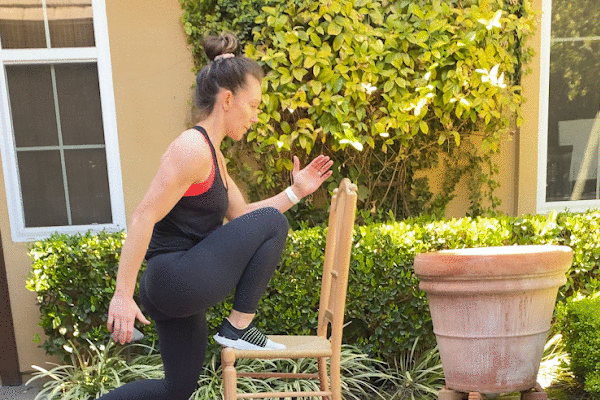
3. Add Some Fat Burning HIIT
Add in these exercises to get your heart pumping.
Jump Lunges
- Begin in a split stance, lunge position.
- Slightly bend your knees and explosively jump into the air and switch leg positions, landing with your front leg back and back leg in front.
- As you land, make sure you bend your knees to absorb the impact and land softly.
- Keep your hips back, avoid allowing your knees to cave toward the center and don’t lock your knees.
- Drop back down into a deep lunge and repeat back and forth.
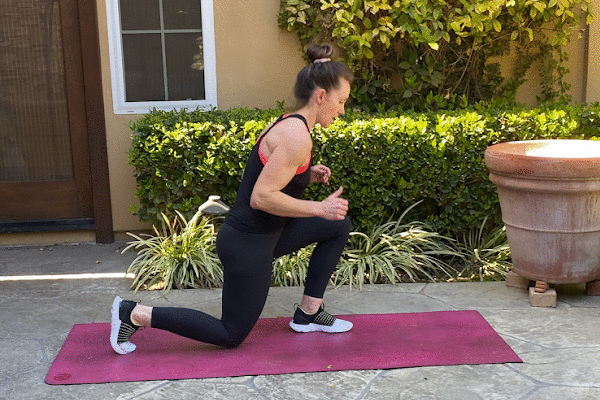
Jump Squats
- Start standing with your feet shoulder-width apart.
- Bend your knees and descend into a regular squat. Engage your core and explosively jump into the air.
- When you land, lower your body back into a squat position to complete one rep.
- Make sure your focus on landing with your knees bent and do not let them cave in toward the center.
- Land gently and quietly to control the movement and absorb the impact.
Charleston’s
- Start standing with your feet together.
- Step your right foot behind you as far as you can into a deep reverse lunge position while simultaneously bringing your right hand to the ground.
- Explosively press through your left foot to drive your right knee up in front of you while jumping off your left foot.
- As you land, bring your right foot back into the reverse lunge position.
- Repeat for all reps before switching sides.
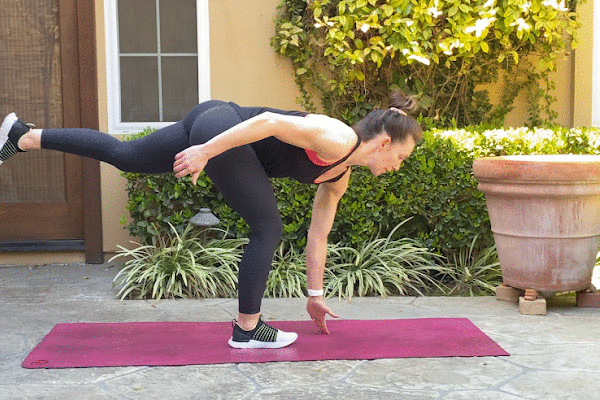
Sprinting
Add this sprinting workout to your workouts to really strengthen your glutes.
Final Thoughts on Underbutt Exercises
These underbutt exercises are great for working toward improving body confidence but more importantly, strong glutes are important for body overall body function.
Give this workout a try!
| Exercise | Reps |
|---|---|
| Warm-up–3 Sets | |
| Single leg cha-cha | 30 seconds each leg |
| Glute bridge | 30 seconds |
| Glute bridge march | 30 seconds |
| Workout Superset #1- 3 Sets | |
| Single leg hip thrusts | 15 reps each leg |
| Bulgarian split squat | 15 reps each leg |
| Superset #2- 3 Sets | |
| Donkey kicks | 20 each leg |
| Single leg deadlift/reverse lunge | 10 each leg |
| Set #3– 3 sets | |
| Stability Ball Glute Bridge | 20 reps |
| HIIT Circuit: 40 seconds work with 20 seconds rest for 4 minutes. | |
| Jump Lunges | |
| Jump squats |
Sources
FACT CHECK
Struggles of a Fit Mom uses only high-quality sources, including peer-reviewed studies, to support the facts within it’s articles. Read my editorial process to learn more about how I fact-check and keep my content accurate, reliable, and trustworthy.
https://bmjopensem.bmj.com/content/3/1/e000245

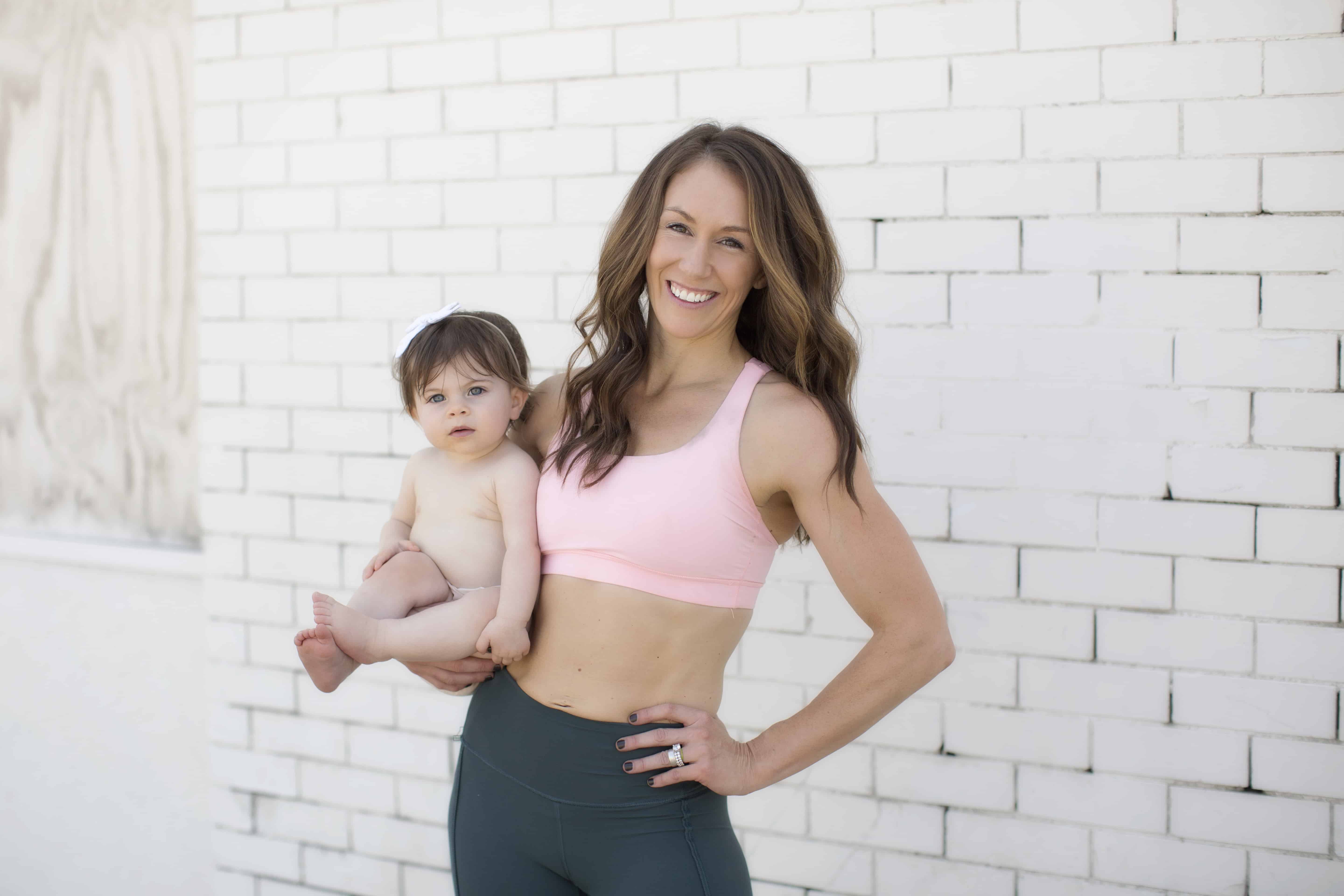
Brooke is a certified Prenatal and Postnatal Exercise Specialist with a Bachelors of Science degree in Kinesiology-Exercise Science. She is also a mom of 3 girls with more than 15 years of experience in health and fitness. Brooke’s goal at Struggles of a Fit Mom is to help motivate, educate and inspire other busy mamas who struggle with finding time, energy and motivation to take care of themselves in the chaos of motherhood.

